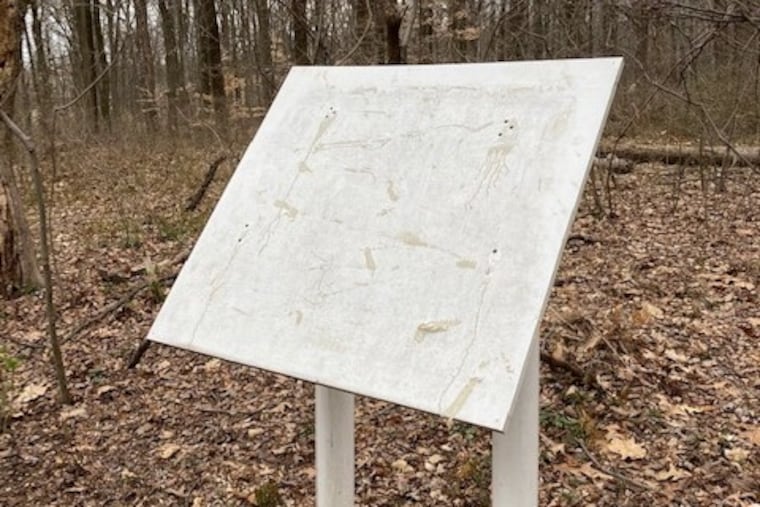An African American history trail in Delaware was vandalized weeks after it opened
The vandalism at the Iron Hill Museum's trail in Newark, Del., caused thousands of dollars in damage.

A newly unveiled African American history trail at the Iron Hill Museum in Newark, Del., was vandalized last weekend, causing thousands of dollars in damage just weeks after the trail’s debut.
Created as part of a $25,000 grant from the state’s Department of Natural Resources and Environmental Control, the trail focuses on the history of a Black community that formed in the Iron Hill area in the 1800s, as well as the history of a 100-year-old schoolhouse — Iron Hill School #112C — that was built by the chemical mogul Pierre S. du Pont. It was unveiled in a ribbon-cutting ceremony Feb. 24, which was attended by family members of former area residents and former students of the school.
The idea was to showcase “the under-recognized history of an independent, long-standing free African American community of landowners on Iron Hill, placing it into the context of a society in which free and enslaved Blacks coexisted before the Civil War,” said Debbie Keese, vice president of the Delaware Academy of Science.
As part of the trail, Delaware Academy of Science volunteers erected 14 informational signs about the community’s history. But last Sunday, a volunteer who lived nearby was doing grounds maintenance, and saw that nearly all the signs were missing, with some display stands ripped out of the ground.
Iron Hill Museum workers found a few of the signs broken and thrown into the woods along the trail, and about 10 missing entirely, academy president Robin Broomall said. One sign remained in place but was scraped over with a tool, while one sign remained untouched.
The metal signs had been affixed to their displays with screws and caulking, and some measured as large as three feet wide. They cost about $1,000 to be printed, but reprinting them and repairing their stands for reinstallation will cost an estimated $8,000.
In addition, a large wooden bench was thrown down a hill into an old iron mine pit on the property, and broken glass was dumped on a nearby trail.
“It’s disheartening for the staff and the volunteers we have,” Broomall said. “We worked so hard to have a good display to talk about the history of the Iron Hill region.”
This is not the first time Iron Hill Museum and the trail have dealt with vandalism, Broomall said. Similar incidents have been happening for more than two years, though “not quite to this extent,” she said.
In past incidents, the museum’s storage shed was broken into, a window on it was broken, and locks were cut. Trash has been dumped on the trails, and other signage has been broken or pulled down. And the trail cameras the museum uses to monitor the area are often taken within a day or two of being put up, Broomall said.
She said the museum does not believe this most recent vandalism was racially motivated, saying that “it could have been named any trail at all, and I think this still might have happened.” Instead, she believes the vandal is someone who has targeted the organization in the past.
“I cannot say why we think that it is this person,” Broomall said. “But the state police are quite aware of the whole situation.”
Delaware state police said that they are investigating the incident and that they responded to two others last year. In those cases, a gate was damaged and trash was left on the property.
Broomall said the museum retained the information it used to make the signs, which took Keese hundreds of hours of research and interviews to put together. They can rebuild, but its not yet clear what can be done to prevent incidents from happening
“We’ll be able to redo the signage, but then what do you do?” Broomall said. “Wait for them to be hit again?”